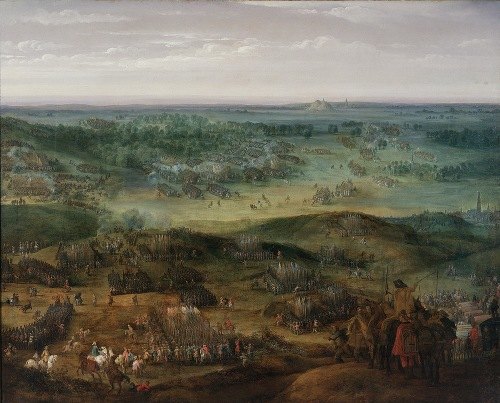
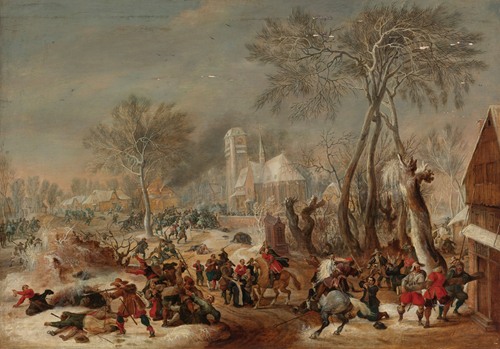
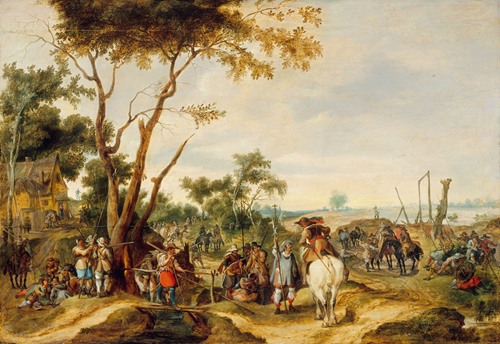
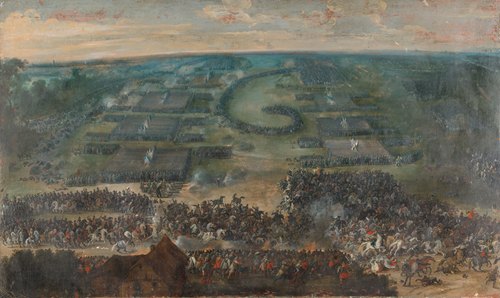
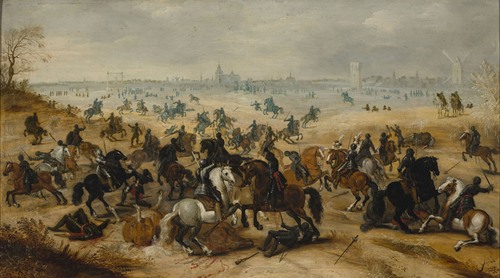
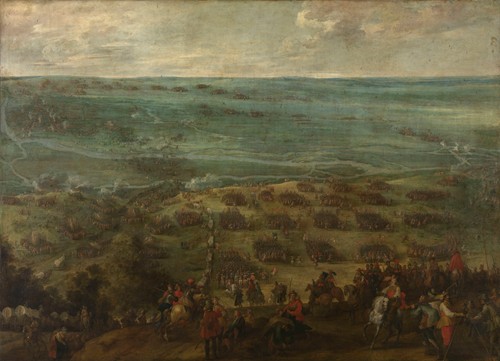
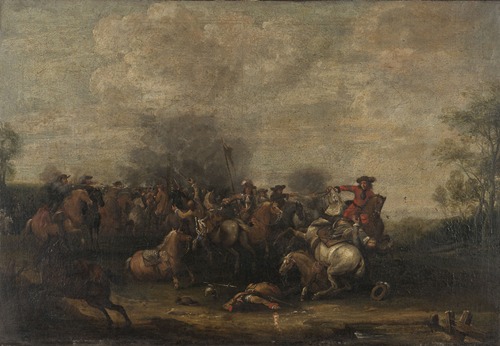
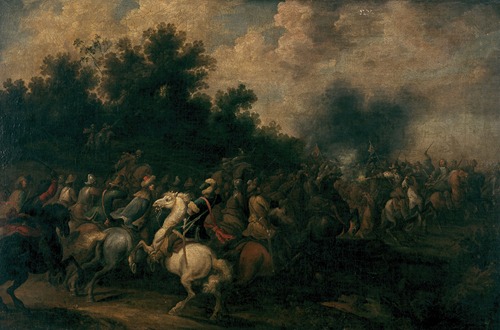
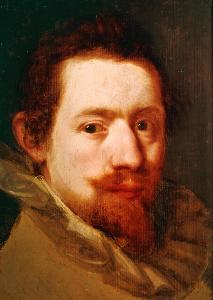

Peter Snayers or Pieter Snayers was a Flemish painter known for his panoramic battle scenes, depictions of cavalry skirmishes, attacks on villages, coaches and convoys and hunting scenes. He established his reputation mainly through his topographic battle scenes providing a bird's eye view over the battlefield. He further painted large landscapes and portraits of the aristocracy. He was a regular collaborator of local landscape painters and also Rubens.
After starting his career in Antwerp, he moved to Brussels where he worked for the court. He was the principal military iconographer of the court in Brussels and the appointed court painter with the rank of lieutenant-colonel.
Snayers was born in Antwerp where he was baptized on 24 November 1592. His father Lodewijk was the city messenger of Antwerp for Brussels. He was enrolled as a pupil of Sebastiaen Vrancx in Antwerp's Guild of St. Luke in 1612. Sebastiaen Vrancx was a prominent battle and genre painter. In 1613 Snayers became a master in the Guild.
In 1618 Snayers married Anna Schut, a cousin of the painter Cornelis Schut. Their first child Cornelis was baptized on 8 September 1620. Snayers achieved success as an artist. In Antwerp the family lived in luxury and Snayers participated annually in the lavish banquet of the chamber of rhetoric Violieren.
Snayers joined the painters' guild in Brussels on 16 June 1628. He became a citizen of Brussels at the same time. It is believed he had been working for the Archduke Albert (died in 1621) while living in Antwerp. He had been appointed court painter and 'domesticq van 't Hof" (domestic of the court) by the Archduke. Snayers likely moved to Brussels in order to pursue opportunities at the court of the Archduchess Isabella, the widow of the Archduke and the governess of the Southern Netherlands.
After Isabella's death in 1633, Snayers became court painter to the next two governors, the Cardinal-Infante Ferdinand of Austria (1634–1641) and the Archduke Leopold (Wilhelm) (1647 to 1656). For them he painted scenes of victorious battles in the tradition of sixteenth-century tapestries. He painted portraits of the aristocracy in Brussels and large landscapes. He also worked for other eminent patrons and the open market. A highlight in his career was a commission for 22 battle paintings by general Ottavio Piccolomini.
While working in Brussels he regularly visited his hometown Antwerp but never returned to live there. He collaborated with painters in Antwerp such as Peter Paul Rubens on several occasions, including on the never-finished Life of Henry IV cycle (1628–30) and the Torre de la Parada series (c. 1637–1640). Both during his Antwerp and his Brussels periods, He mingled with the elite of his time. He climbed the social ladder and aspired to live a lifestyle similar to that of the aristocrats of his day. He was thus an example of the 17th century 'aristocratization' of successful citizens.
His pupils included Guilliam van Schoor and Adam Frans van der Meulen. The latter became a leading battle painter and court painter to Louis XIV of France.
There is no record of when Snayers died but it is believed he died in Brussels in 1667.







